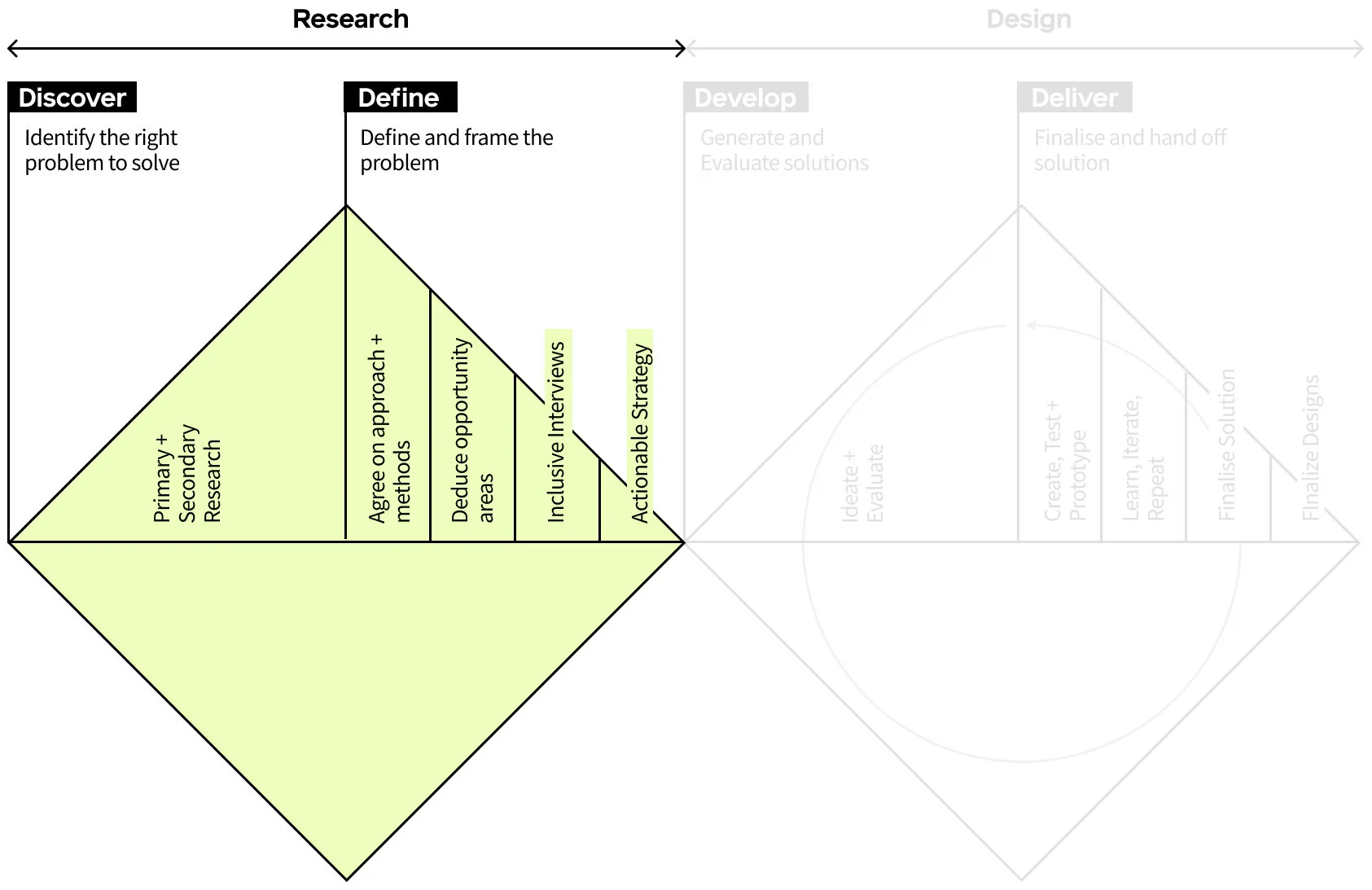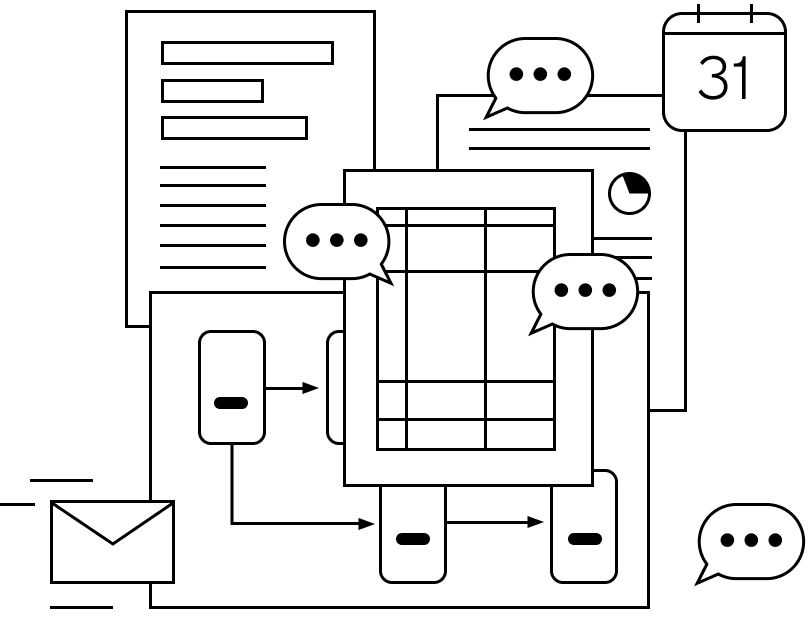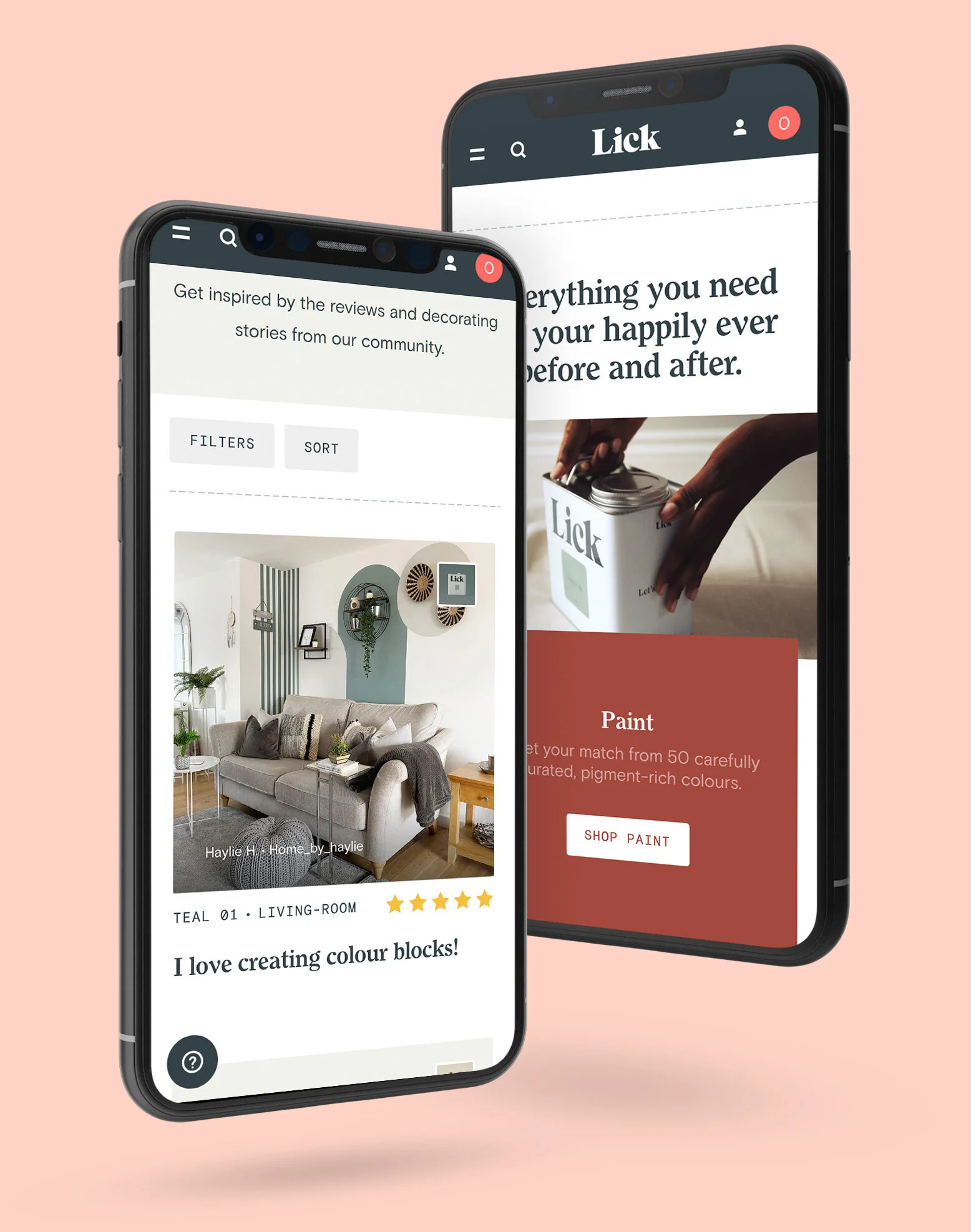
Who are those customers you are missing?
Inclusive Research is the best way to expand your audience reach and boost your company’s reputation at the same time.
The aim of the Inclusive Research is to look beyond your current user-base and to see how you can change your product to attract new user groups.
During the research process we look into your current user base, your company’s objectives, current product usability, as well as conduct interviews with potential customers. At the end of the research we will present data-driven actionable insights, that will guide you in the right direction to expand.
Our inclusive product design journey looks like this:

Here are our 5 Steps of Inclusive Research process.

1. Understand the context, objectives & hypothesis.
The aim of this stage is to understand your company better and to find hidden opportunities. We will examine your strategies, teams and processes to identity the research areas.
Objectives of this stage:
➜ Examine existing research and support research teams in adopting Inclusive research practices
➜ Share Inclusive research methodologies and case studies with the research team and a wider organisation
➜ Examine existing research and support research teams in adopting Inclusive research practices
➜ Share Inclusive research methodologies and case studies with the research team and a wider organisation
2. Agree on approach, methodologies and deliverables.
During this part of the process we will be working closely with your team to choose processes that suit your team best. We will outline the roadmap and the course of action for the project.
Objectives:
➜ Understand what data is available
➜ Choose between qualitative vs. quantitative research or include both
➜ Choose a single or multi-method approach
➜ Understand the scale of the project

3. Specify user segments and find participants.
During this stage we will deduce opportunity areas. We will specify the groups of people who could help answer the questions and open up new angles to the current hypothesis. We will also review and brainstorm the methods of recruiting participants as a team.
Objectives:
➜ Understand who we need to engage with to answer the specified questions
➜ Identify the ways to find these participants (based on a budget and available resources)
➜ Plan the timelines based on the selected methods
4. Conduct inclusive interviews.
This step depends on the chosen methodologies for the research. It can include organising and publishing surveys, analysing data or/and facilitating interviews. In our experience, a combination of discovery questions and going through a digital product or a prototype worked best for discovery interviews.
If the selected method includes Interviews, the objectives are:
➜ Arrange interviews with the chosen participants
➜ Agree on a discussion guide and plan the interviews
➜ Agree on the roles in the team and the process during the interviews
➜ Make sure that participants sign off the consent and NDA
➜ Conduct the interviews

5. Present actionable insights.
We will leave you with outcomes and documentation that are actionable, clear and easy to read. The outcomes depend on the objectives originally set. However, we always end our process with actional insights, inclusive framework for your team and data from our research.
Objectives:
➜ Qualitative /quantitative reports on current and potential users
➜ Strategy document outlining the opportunities for expansion and product changes
➜ Individual and group coaching for implementation and maintenance of an inclusive culture
➜ Inclusive design playbooks, frameworks and tools to operationalise inclusive design practices and to encourage the cross team collaboration
➜ Support with the product integration into communities for larger organisations

There is no wrong timing to do Inclusive Research. No matter what stage is your product in. We can advice on how you can include more people into your vision.
Let us know if you’d like us to tell you more about our process or if you’d like to learn more about inclusive design methodologies.
Design for everyone.
Learn more about our Inclusive Design process.










